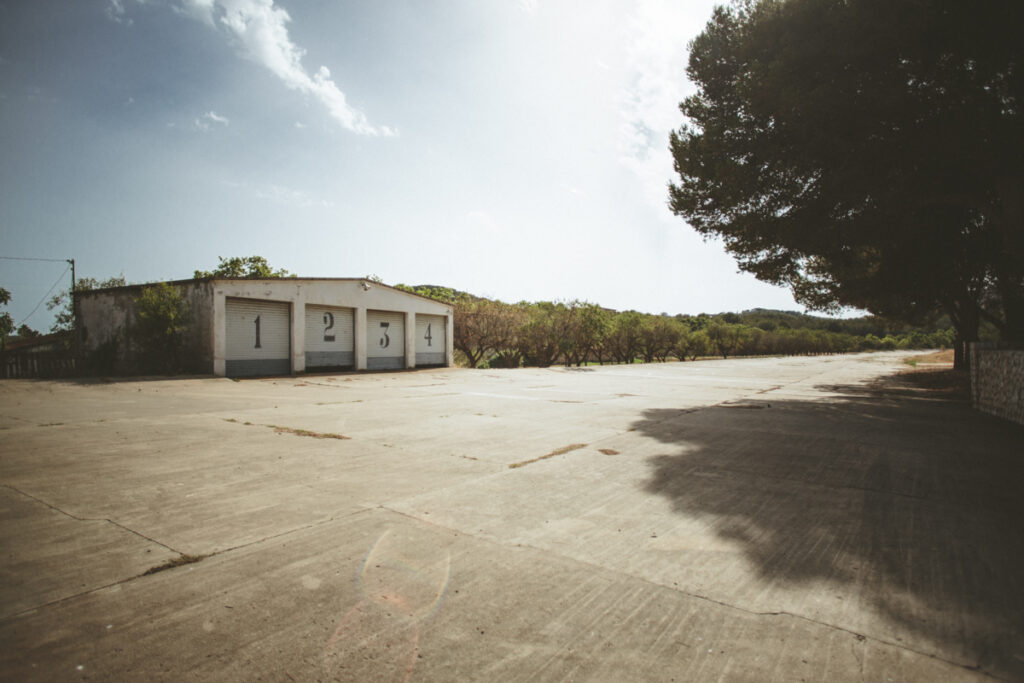The autodrome restoration project in detail: faqs
In this document, we wanted to clearly set out, in detail, exactly what the Autodrome Terramar restoration project is all about. We have been working intensively on this project for several years and collaborated with a number of people, including planning and environmental experts. We’re proud to say that a large part of the project is focused on the landscape and the environment. We have a firm commitment to preserving and enhancing both the nature at the Autodrome and the site’s historic heritage.
For anyone who hasn’t been able to attend the many meetings that we have held with political parties and other organisations over the past years, or if you weren’t able to follow the 15-month consultation process, we aim to address all your questions and concerns below. However, if you have any questions that don’t appear here, please feel free to get in touch with us.
In the first section, you’ll find details about the project in general, and in the second section, you’ll find details specifically relating to environmental concerns.
The Project
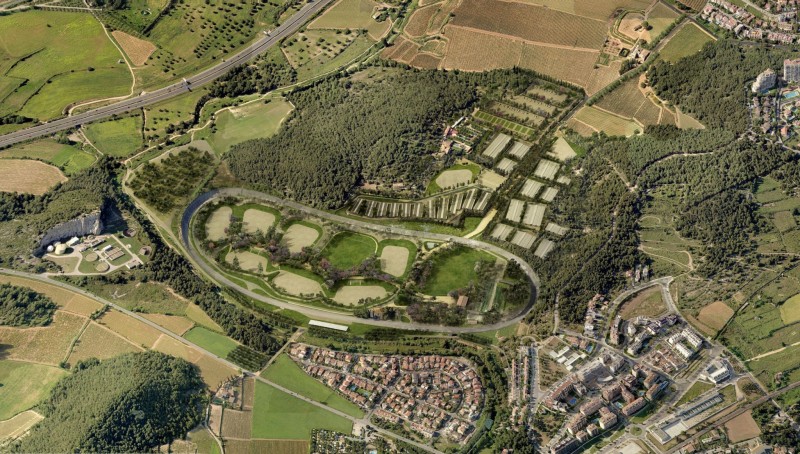
Our mission at the Autodrome Terramar is to create a place where people from all different backgrounds and walks of life can come together around the world of horses, cars, art and ideas. We want to make the Autodrome a unique and iconic place to be preserved, surrounded by beautiful nature and open to both the local community and the rest of the world.
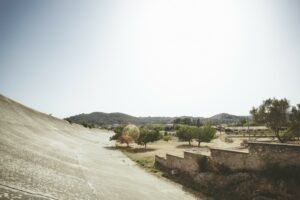
This historic space has been closed to the public since the 1950s. We want to restore and renovate the site so that it can once again be an open, natural setting where lovers of nature, motorsport and equestrian events can come together and create and share some unforgettable moments together.
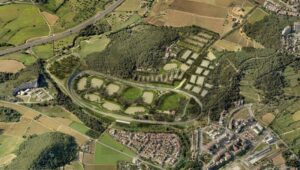
Firstly, this project will once again provide public access to a previously abandoned site so that people can once again enjoy this unique, natural place that we aim to preserve and enhance.
We also plan to make all equestrian events free and open to the public. During events, there will be stalls and food stands selling both local products and produce from our own organic vegetable farm.
Sant Pere de Ribes council will be donated around 25,000 m2 of land for open-air sports, 144,000 m2 of maintained green land and 3,000 m2 of buildable land for public facilities.
The project also includes important elements relating to the landscape and environment. Some of these measures include:
- The planting of more than 700 trees of 30 different species (all indigenous, as well as flowers, meadows and bushes).
- The compensation of built-on farming soil and expansion of the planted area by 50%.
- A plan to restore the Riera de Ribes, which forms part of an agreement signed last April with Sant Pere de Ribes town council.
- Conversion of one hectare of land into an organic vegetable farm.
- Initiatives to protect biodiversity, such as the introduction of beehives, nest boxes, lizard refuges and insect hotels.
You can consult all the relevant measures considered in this document.
The Autodrome will host equestrian events in the winter months, which will be free and open to the public. There also be other motoring events here to pay tribute to the site’s historic significance for the world of motorsport. Races will not be held at the Autodrome.
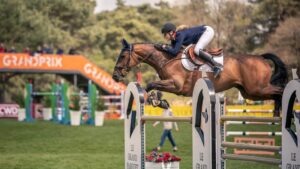
With the exception of private events on very specific occasions, the Autodrome will be open to the public, which it hasn’t been since 1956.
Given the difficult moments in which we currently live and the challenges that doubtlessly await us in the future, it is important to carry out projects that enhance the area whilst being sustainable, energy-efficient, resource-efficient and environmentally friendly. This is something that we take very seriously and which we acknowledge to be a difficult process. But with the right determination, this is exactly what we aim to achieve at the Autodrome Terramar in Sant Pere de Ribes.
To make all this possible, we foresee an initial investment of €25 million for the areas dedicated to equestrian and motor events.
It is also estimated that over 200 jobs will be created in the final phase of the project, as well as those jobs created in building the facilities, either directly or indirectly through collaborations with local businesses.
The main focus of this project is to restore, preserve and protect a previously abandoned piece of industrial heritage. From the day we arrived at the track, we have carried out work to do this, such as repairing the stand, cleaning and adjusting the track or removing corrugated iron. Restoring and preserving these elements is a central part of the project.
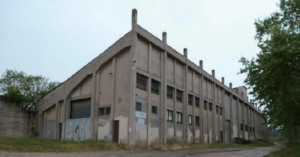
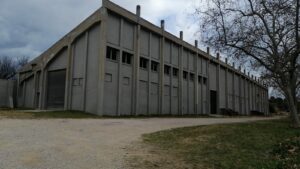
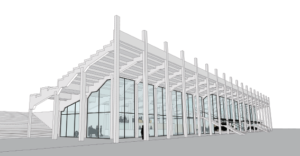
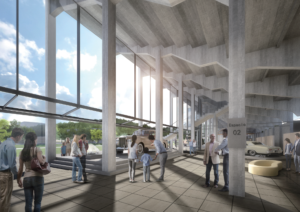
As well as preserving the stand and track, the project also includes plans to restore and preserve:
- The Clots dels Frares (18th-century farmhouse)
- El Clot d’en Sidós (19th century)
- The old “Champion” building (Racing era)
- The old pit boxes
All these buildings are now in very poor condition, and we have already made plans for their repair and restoration.
GRANDPRIX is a French-Spanish communications group that specialises in organising sporting events. They have a long history of organising equestrian events and are the first group in France to work in this sector, organising horse riding events in iconic equestrian locations, such as Paris, Deauville or Fontainebleau. They are also the first equestrian editorial group in Europe, with more than 40 collaborators working in eight different European countries.
The project’s final approval is the result of several years of very intense work, thousands of pages of reports and a huge effort on the part of urban planners, technical teams, the local council and the regional government of Catalonia. It is also the result of a public consultation process that has greatly contributed to making sure that the project is successful whilst also respecting its heritage and the environment.
Over the years, we have worked with urban planners, architects and environmental science experts, and we have discussed our plans with local residents, political parties and all organisations that have shown an interest in our project. This is something that we intend to continue to do because we believe that constructive exchanges can contribute to making this a better project, which is exactly what has happened so far.
So far, the administrative processes have included a long list of studies, documents, reports and appendices, all produced jointly with the relevant public authorities, such as Sant Pere de Ribes council, the Provincial Deputation of Barcelona and various departments of the regional government of Catalonia.
Some of these studies include:
- Economic viability and sustainability report
- Generated mobility assessment
- Environmental strategy analysis
- Landscape impact and integration study
- Acoustic study
- Flood risk assessment
- Feasibility study for the hotel area
- Analysis of manure management processes for equestrian activities
- Public information and citizen participation programme
- Risk analysis study
The project also included a 13-month public consultation process so that institutions, organisations, political parties and private individuals could all make submissions.
Over the course of these four years, the documents produced have been shared with the following public and social organisations:
- Sant Pere de Ribes town council
- Sitges town council
- Barcelona Regional Office of Environmental Action and Evaluation
- Barcelona Regional Planning Commission
- Organisations related to cultural, archaeological and architectural heritage.
- Regional Agriculture, Livestock and Fishing Services
- Home Office Director General of Civil Protection
- Subdirector General of Biodiversity and the Environment
- Rural planning services
- Unified environmental planning office
- Cartographic and Geological Institute of Catalonia
- Catalonia Waste Agency
- Regional Mobility Services
- Regional Tourism Services
- Regional Commerce and Consumer Services
- Office of Territories and Sustainability of the Deputation of Barcelona
- Garraf county council
- Garraf Environmental Protection Group
- ADENC, Association for the Defence and Study of Nature
- SEO Birdlife, Spanish Bird Society
- Catalan Ornithological Institute
- DEPANA, Natural Heritage Defence League
- Aigües de Sant Pere de Ribes (Sant Père de Ribes Water Authority)
- Sorea S.A.
- Sece S.A.
- Directorate-General of Civil Aviation at the Ministry of Development
The total area is made up of 65 hectares (650,000 m2) which shall be allocated in the following way:
- 53,000 m2 buildable land, including 3,500 m2 of current historical existing buildings (the company has relinquished some 40% of buildable surface area):
- 23,000 m2 for hospitality
- 9,000 m2 dedicated to the world of motoring (office, showroom, workshop, etc.)
- 11,000 m2 for stables
- The remaining surface area consists of existing buildings and annexes for events (restaurants, storage, etc.)
- 144,000 m2 of maintained green land
- Concession of land and buildable land to the local council:
- 25,000 m2 of non-buildable land for open-air sports
- 3,000 m2 of buildable land for public use in accordance with the parameters agreed with Sant Pere de Ribes council
The rest of the site consists of shared areas, the equestrian area, the track, accesses, etc.
In the past years, the Autodrome Terramar has already been able to hold special events such as the Barcelona-Sitges rally in March 2019 (which unfortunately had to be cancelled this year) and the global launch of the Seat Cupra in February 2018.
The site has also attracted the interest of film and TV producers and has already been used to film an episode of Amazon Prime’s ‘The Grand Tour’. In December, the British luxury car manufacturer Aston Martin chose the Autodrome as the place to unveil its latest creation, the DBX, the first 4×4 in the company’s history. Peugeot also launched its range of hybrid vehicles here in February. And in the music world, the site was also used to film the video for Antonio Orozco’s latest single, “Hoy”, which was released on the 24th of April 2020.
Car launches, such as those mentioned above, new models and classic car shows. Many car brands already come to the Autodrome, but on-site conditions could be improved. Furthermore, members of the public are currently unable to attend. It would be fantastic to imagine holding a big classic car festival open to the public in a temple like the Autodrome.
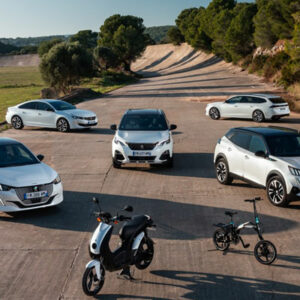
Environmental Issues
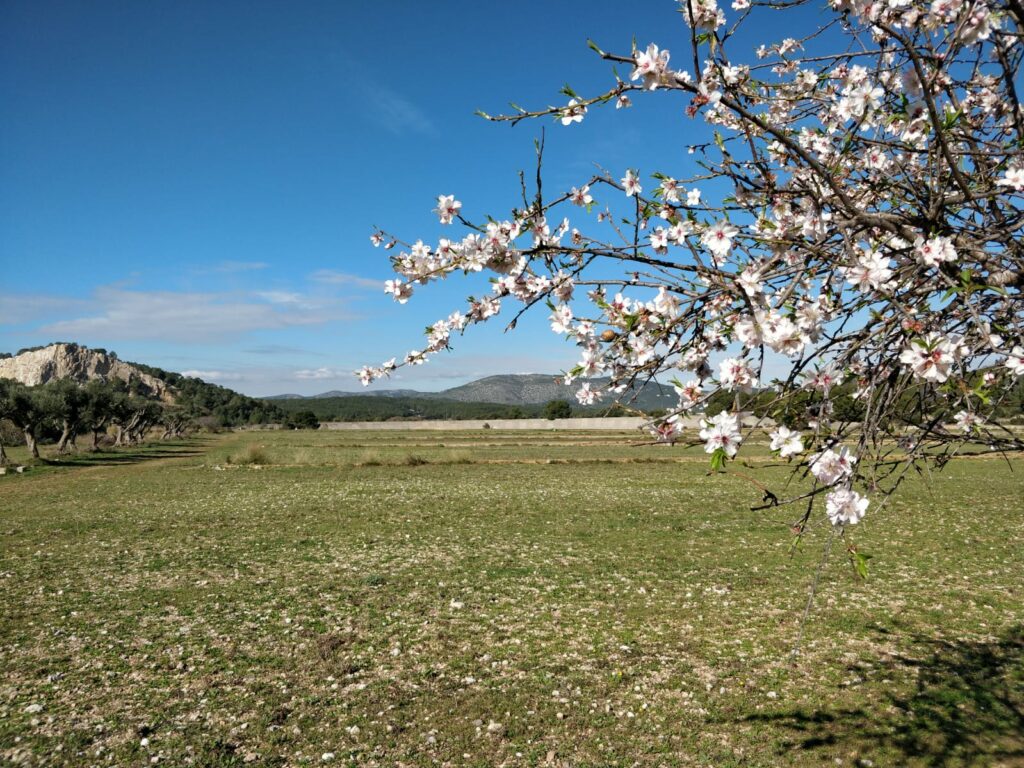
We are conscious that we are operating in an environment that must be treated with great respect. The Autodrome was here long before we were even born, as were the Garraf and the Riera de Ribes. As a result, it is very important that we are conscious of our impact on the environment. We aspire not just to not harm the area’s natural legacy, but to actually enhance it.
No. No natural areas, forests or riverbanks will be destroyed. On the contrary, we plan to will replant riverbank vegetation across the Riera and in the area behind the south curve, which is currently an abandoned field. We also plan to plant 700 trees on the site where there presently just abandoned fields and chicken houses.
In addition, the peripheral path around the Autodrome will be cared for and maintained in good condition so that people can enjoy some pleasant walks.
The landscape and the environment are very important factors in this project. We don’t just want to preserve the site’s historic value; we’re also very aware that we need to respect its significant natural value too.
Everything that we do will aim to integrate the facilities within the natural environment. In fact, the landscape aspect of the project has been developed by Batlle i Roig, Catalan landscapers who are recognised for their respect for the environment.
We have worked for several years in collaboration with environmental science experts and public authorities to define a project that does not just avoid damaging the environment but actually aims to improve it. Some of these public authorities include Sant Pere de Ribes council, the Catalonia Director General of Urban Planning (DGU), the Barcelona Regional Office of Environmental Action and Evaluation (OTAAA) and the Catalan Water Agency (ACA).
The measures adopted have also been the result of a 13-month public consultation process, which has received contributions that have definitely helped to improve the overall project proposal.
Over 700 trees of 30 different species will be planted (all indigenous), as well as flowers, meadows and bushes.
The farming soil will be extended by 50% and work will be undertaken to restore the Riera de Ribes.
One hectare of land will be dedicated to an organic vegetable farm and initiatives will be carried out to protect biodiversity, such as the introduction of beehives, nest boxes, lizard refuges and insect hotels.
All current trees will be maintained, particularly the more than 40 olive trees that we have cared for since the beginning of the project in 2016 and which are now healthy and pruned. Any trees that cannot stay in their current location will be moved elsewhere on the Autodrome site.
The rest of the fruit trees on site (apricot trees, lemon trees, almond trees, fig trees, etc.) have been inventoried, pruned and examined and those that are in good health will be preserved. Given that the land is fertile, more fruit trees will be planted, and we plan to triple the number of fruit trees currently on the Autodrome site.
The area behind the southern curve (currently an abandoned field) will be restored with riverbank vegetation.
An inventory will be carried out of the dwarf palms, pines and Mediterranean shrubs affected by the project. If necessary, they will be replanted in the public facilities area (south curve) or around the forest of Can Baró.
There are plans to restore the gallery forest on the west side of the Autodrome between the track and the Riera de Ribes (within the planning area).
The greatest concentration of dwarf palms is in the forest of Can Baró. All those that are protected species in Europe will be maintained. Those that may be affected by the project will be transplanted elsewhere on the site, with the aim of maintaining the density of the species on the Autodrome site.
The stream known as the Torrent dels Frares will be cleaned up. In particular, we will uproot the elephant grass since this is an invasive, foreign species.
A positive impact. The project simply will not affect the Riera de Ribes. However, given that it is currently in a terrible condition (full of rubbish and invasive species), we have signed an agreement with Sant Pere de Ribes council to clean up the Riera de Ribes and restore its biodiversity.
The north access road that passes through farming land is an existing road and is part of the current area planning. It will be repaired and widened, and a bicycle lane will also be added.
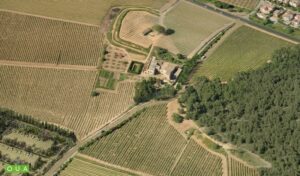
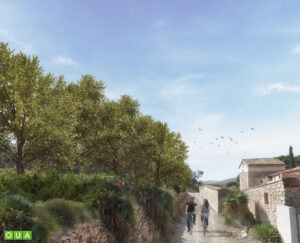
Parking areas for light vehicles will be established on fields, whilst heavy vehicles will park on gravel and organic materials. This way, the ground will be permeable, and the visual impact will be reduced.
With respect to the parking areas in the north of the site:
- Organic, terraced structures will be created for the best possible integration with the landscape
- All existing dry-stone walls will be repaired and preserved.
- The forests will not be touched.
- In this area, we will plant one hectare of land as an organic vegetable farm for consumption on site.
We will not be creating any tarmacked parking in the north of the site. The parking terraces in the north will be changeable so that various configurations can be set up. For reasons of safety and security, the plan needs to account for the maximum possible number of spaces. In the most exceptional case, this will be no more than 1,500 parking spaces
We hotel area of the site is planned for a approximately 150 guests, distributed in small villas and buildings that will be well integrated into the landscape. The hotel will host some of the participants in equestrian events, and its presence will be beneficial for Sant Pere de Ribes, Sitges, the rest of the region and Catalonia as a whole.
The planning proposal includes a maximum building surface area of 23,000 m2 dedicated to the hotel area.
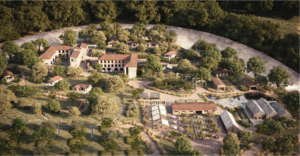
We plan to treat and reuse horse manure (which will be collected daily) as compost. After months of work with an environmental expert to produce an analysis report on all the potential manure management solutions (biomass, farming, composting, etc.), we have decided that this will be the most sustainable and environmentally friendly approach.
As part of our environmental planning, we have carried out assessments that go beyond the legal requirements with respect to CO2 emissions. Monitoring our carbon footprint is a key part of our objectives and we will work to keep it as low as possible.
We have taken measures to optimise:
Energy efficiency
- Eco-design and low energy consumption for buildings.
- Use of solar panels for on-site consumption, adapted materials and natural ventilation
Water consumption
- Irrigation of the sand show jumping courses
- Rainwater recovery using reservoirs
- Use of water from a purifier
- Planting of indigenous plant species that consume less water
